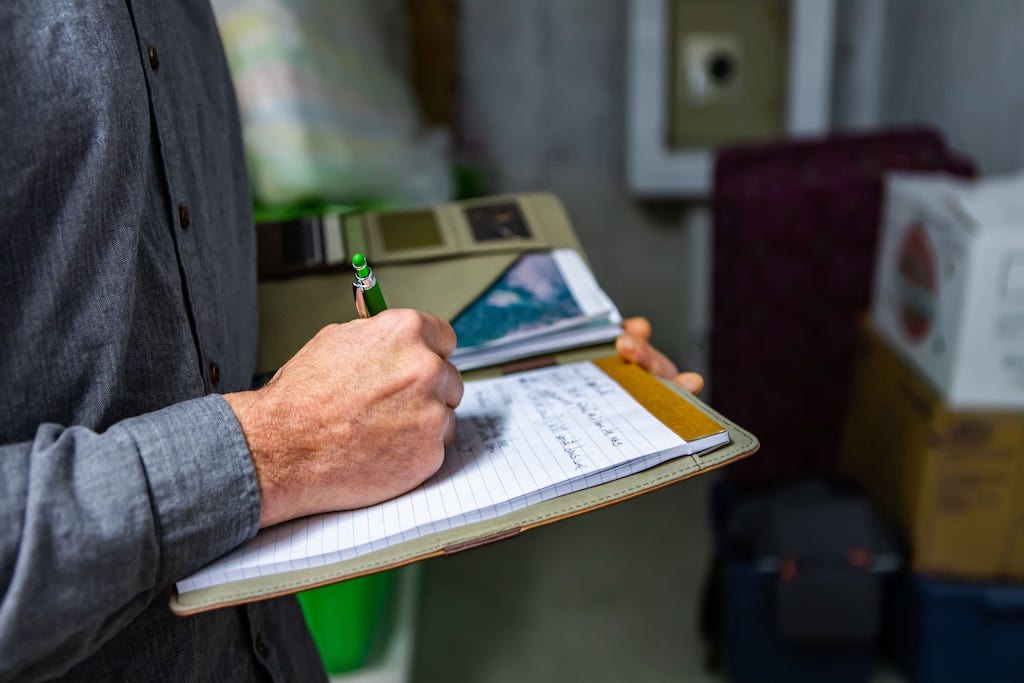Legal property inspections are a critical aspect of maintaining the safety, compliance, and overall success of your investment. As a landlord, inspecting your property ensures adherence to rental property inspection laws that safeguard both your interests and those of your tenants.
Thank you for reading this post, don't forget to subscribe!These inspections, conducted with the right frequency and thoroughness, are fundamental in identifying potential issues before they escalate. For short-term property agents and property managers, the stakes are even higher.
The transient nature of short-term rentals demands a dynamic approach to property management. Regular and legally compliant rental property inspections not only enhance tenant satisfaction but also fortify the integrity of the property.
What Does the Law Say about Property Inspections by Landlords
Landlord inspection laws form the backbone of rental property management. They dictate how and when a landlord can inspect their properties. These laws are designed to balance the landlord's right to maintain and inspect their property investment with the tenant's right to privacy.
Typically, the law requires landlords to provide notice before conducting an inspection. The specific period for this notice varies by region, but it's generally between 24 to 48 hours. Additionally, the frequency of inspections, while not strictly regulated should be reasonable.
The Role of Lease Agreements in Property Inspections
Lease agreements often contain specific clauses that detail the terms of rental property inspections. These agreements serve as a legal framework that both landlords and tenants must adhere to. They include provisions for routine maintenance, emergency repairs, and other circumstances that might necessitate a landlord inspecting the property.
Best Practices for Property Managers
Best practices include scheduling inspections at a frequency that is respectful to tenants yet effective in maintaining the property. Regular inspections agreed upon in the lease agreement can help in the early identification of maintenance issues, thus preserving the value of the property investment.
It's also essential for property managers to keep detailed records of each inspection, including dates, findings, and any actions taken. This documentation ensures compliance with landlord inspection laws and serves as a valuable record in case of disputes or legal inquiries.
Preparing for an Inspection
Step 1: Understanding Legal Requirements
Before planning a rental property inspection, landlords must familiarize themselves with rental property inspection laws. These laws vary by state and locality, outlining how often a landlord can inspect a rental unit and under what circumstances.
Property managers should ensure that their actions comply with local regulations, especially concerning a tenant's right to privacy and quiet enjoyment. It's crucial to understand situations that warrant inspections, like a maintenance request, suspected damage, or preparing for a move-out inspection.
Landlords must also be aware of conditions under which a tenant can refuse entry, and how to handle such situations legally and professionally.
Step 2: Issuing a Written Notice
Providing tenants with a written notice is a legal requirement in most areas before conducting a rental inspection. This notice should specify the date, time, and purpose of the inspection.
Multiple inspections in a short period might infringe on the tenant's right to quiet enjoyment. The notice period varies depending on local laws but generally ranges from 24 to 48 hours. Property management software can be useful for tracking and managing these notifications efficiently.
Step 3: Preparing for the Inspection
Landlords and property managers should prepare a checklist for the rental inspection. The list should include areas to be inspected and specific issues to look for, like potential safety hazards or maintenance needs.
Landlords should respect the tenant's space and belongings during the inspection. They should also be prepared to address any immediate concerns the tenant might have. For extended absences, the landlord should obtain the tenant's permission before entering. T
Step 4: Conducting the Inspection
During the property inspection, landlords should be thorough yet efficient. They should inspect all areas outlined in the lease agreement and look for signs of damage or needed repairs. If a landlord suspects any violation of the lease terms, they should document it carefully.
Step 5: Post-Inspection Follow-Up
After the inspection, landlords should provide feedback or a summary of the inspection to the tenant, especially if there are areas of concern or required repairs. If any part of the security deposit might be affected due to damages found, this should be communicated clearly.
Step 6: Documentation and Record Keeping
It's important for landlords and property managers to keep detailed records of each inspection. This includes dates, findings, and any follow-up actions. The records can serve as evidence in case of disputes, future rental inspections, or when preparing for a tenant’s move-out.

Best Practices for Conducting a Thorough and Legal Property Inspection
Respecting Tenant Privacy in Short-Term Rental Properties
- Schedule Inspections Appropriately: Always schedule property inspections at a time convenient for the tenant, even in short-term rental scenarios. This approach shows respect for the tenant's schedule and privacy.
- Provide Adequate Notice: Consistently provide advance notice before conducting an inspection, adhering to local laws and lease agreement terms. This notice should detail the inspection's purpose, date, and expected duration.
- Limit Access to Necessary Areas: During the inspection, limit access to areas that are explicitly outlined in the lease agreement for inspection. Avoid entering personal spaces like bedrooms or bathrooms unless absolutely necessary and mentioned in the agreement.
- Professional Conduct: Maintain a professional demeanor throughout the inspection. This includes not commenting on the personal belongings or lifestyle choices of the tenant.
- Communicate Openly: Engage in open communication with the tenant. Explain what you are inspecting and why, addressing any concerns they may have.
Identifying and Addressing Potential Issues Promptly
- Use a Detailed Checklist: Develop a comprehensive checklist that covers all areas of the property. This checklist should include structural elements, plumbing, electrical systems, appliances, and any other relevant aspects of the property.
- Look for Signs of Damage or Neglect: Pay attention to signs of wear and tear, damage, or neglect. This includes checking for water damage, inspecting for safety hazards, and ensuring that all fixtures and appliances are in working order.
- Document Findings: Take photographs or notes of any issues found during the inspection. This documentation is vital for record-keeping and in case of disputes.
- Address Urgent Issues Immediately: If you identify any urgent safety or maintenance issues, prioritize addressing them immediately. Inform the tenant of these issues and the planned course of action.
- Plan for Non-Urgent Repairs: For non-urgent matters, plan a timeline for repairs. Communicate this timeline to the tenant and ensure that the repairs are completed in a timely and efficient manner.
- Follow-Up After Repairs: After completing any repairs, follow up with the tenant to ensure that the work was satisfactory and that no further issues have arisen.
Technology and Tools for Efficient Inspections
Streamlining Scheduling and Notifications: Property management software can significantly streamline the scheduling of inspections and sending notifications to tenants. Buildium and TurboTenanat are top-tier examples of property management software.
Record Keeping: Such software provides a centralized location for storing all records related to property inspections, their costs, and general accounting. They can include dates, notes, service prices, monthly costs, as well as analysis and trends of maintenance expenditure. These tools offer an organized and easily accessible record-keeping solution.
QuickBooks and NetSuite from Oracle are examples of intuitive and easy-to-use records management software.
How to Navigate Challenges and Disputes in an Inspection
Handling Tenant Refusal to Allow Inspection
- Understanding Tenant Rights: Recognize tenants' rights to privacy and quiet enjoyment. If a tenant refuses an inspection, first ensure that the notice provided is adequate and in compliance with local laws.
- Communication: Openly communicate with the tenant to understand their concerns. Sometimes, rescheduling at a more convenient time for the tenant can resolve the issue.
- Legal Advice: If refusal persists, seek legal advice to understand the next steps, ensuring actions are within legal boundaries and the terms of the lease agreement.
Resolving Disputes Over Findings
- Documenting Evidence: Thoroughly document any findings during the inspection with photos and notes. This documentation can provide clarity and support your position in a dispute.
- Discussion and Negotiation: Engage in a calm discussion with the tenant about the findings. Be open to listening to their perspective and try to reach a mutually acceptable resolution.
- Mediation: If a dispute over findings cannot be resolved through discussion, consider mediation. A neutral third party can help facilitate a resolution that is fair to both parties.
Addressing Complaints About Inspection Frequency
- Review Inspection Frequency: Ensure that the frequency of inspections is reasonable and compliant with local regulations and lease terms. Over-inspecting can lead to tenant complaints.
- Explaining the Reason for Inspections: Clearly explain to tenants the purpose of the inspections and how they benefit both the landlord and tenant.
- Adjusting Schedule: If necessary, adjust the inspection schedule to be less intrusive while still ensuring the property is adequately maintained.
Dealing with Disagreements About Repairs
- Prioritize Safety and Compliance: Address safety issues and legal compliance repairs immediately. Explain to the tenant why these repairs cannot be delayed.
- Negotiate Non-Essential Repairs: For repairs that are not urgent, discuss with the tenant to find a suitable time frame for completion that causes minimal disruption.
- Document Agreements: Document any agreements or plans made regarding repairs, ensuring both parties are clear about the expectations and timelines.

Invest in Short-Term Rental Properties with The Short Term Shop
Are you looking to buy, sell, or maximize earnings from your short-term rental property? The Short Term Shop brings a wealth of experience and a track record of success. Our dedicated short-term property agents provide detailed market analyses, investment insights, and hands-on guidance to help investors make informed decisions.
By working with the Short Term Shop, you are investing in a partnership that aims to grow your wealth and secure your financial future in the lucrative world of short-term rentals. Speak with one of our team about short-term rental investments today.
Frequently Asked Questions about Legal Property Inspections by Landlords
Are there specific times of day that a landlord is allowed to perform property inspections?
Yes, landlords should conduct inspections during normal business hours. This respects the tenant's personal time and aligns with standard professional practices. Normal business hours are generally considered to be between 9 AM and 5 PM, Monday to Friday.
What are a tenant's rights if a landlord enters the property without proper notice?
If a landlord enters a rental property without giving proper notice, the tenant may have grounds to file a complaint or take legal action, such as going to small claims court. Tenants have the right to privacy, and landlords must adhere to the lease or rental agreement and local laws regarding landlord access.
Can a landlord perform inspections for reasons other than routine maintenance or emergency repairs?
Yes, a landlord can inspect a rental property for reasons other than routine maintenance or emergency repairs. This includes inspections for fire safety, pest control, or showing the property to prospective buyers or tenants. However, the landlord must still provide proper notification and respect the tenant's privacy.
